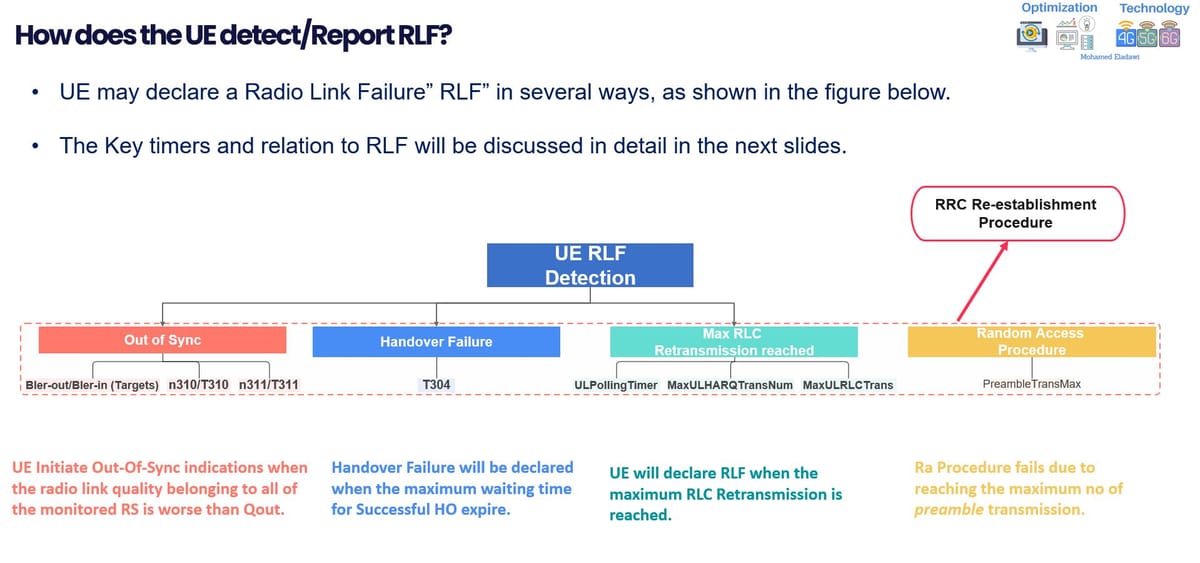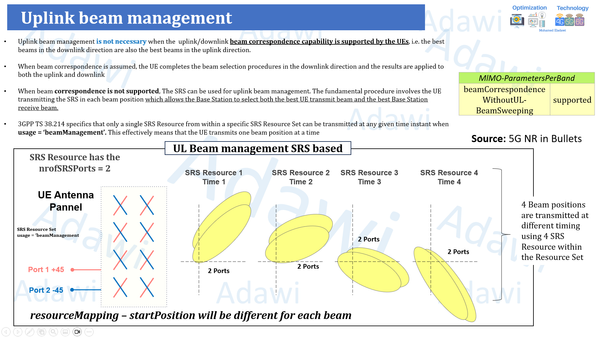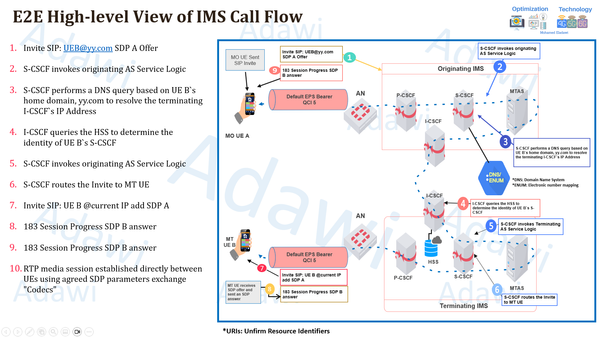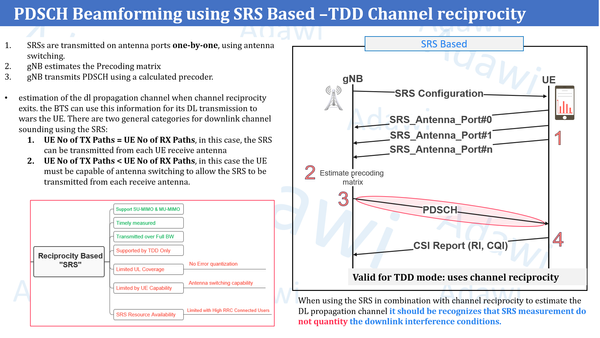How does the UE detect a 5G Radio Link Failure ❓

How does the UE detect a Radio Link Failure ❓
- Understanding this part is key, especially when troubleshooting or improving 4G & 5G retainability. It helps you know how the UE spots a radio link failure, which is vital for pinpointing issues. Plus, it gives you confidence when adjusting UE-related timers for better performance.
- It's important to understand that the BTS and UE independently supervise radio procedures and events to detect RLF. Based on UE or BTS-related timer configurations, the UE or BTS can declare a Radio Link Failure (RLF) based on the network settings. This means that UE and BTS detection of out-of-sync can be asynchronous and independent events.
There are various types of UE RLF detection methods. Below is the most common cases and UE will declare Radio Link Failure(RLF) if any of the below cases meet.
- Out of Sync: UE Initiate Out-Of-Sync indications for a consecutive number based on configure parameters and this is when the radio link quality belonging to all the monitored Reference Signals is worse than Qout.(n310, n311, T310)
- T304: Handover Failure will be declared when the maximum waiting time for Successful HO expire.
- MAX UL RLC Retransmission: UE will declare RLF when the maximum RLC Retransmission is reached.(MAXULRLCTX) 4-Random Access Procedure: Random Access Procedure fails due to reaching the maximum no of preamble transmission.
Then, What happens after the RLF Declaration ❓
- The UE's declaration of RLF results in the initiation of the RRC re-establishment procedure.
- Meanwhile, the BTS's detection of Out of Sync results in a forced PDCCH procedure targeting UE to perform RRC re-establishment, and the BTS must wait for a configurable timer for the UE to execute RRC re-establishment.
Key Points & Important Notes:
- A UE facing Radio Link Failure quickly turns off its transmit power to avoid causing uplink interference after losing connection.
- 3GPP TS 38.133 states that a UE should power down within 40ms of detecting Radio Link Failure.
- The BTS must also detect this failure to prevent resource allocation towards an unreachable UE.
- These measures are designed to secure network capacity during RLF incidents.
- This also explain when UE/Network may have intermittent or complete silent interruptions. For instance, during the RLF procedure "Out of Sync Reporting," the UE experiences voice interruptions until connection recovery.
*The Key timers and relation to RLF will be discussed in separate posts.
Data Source:
- 5G NR in Bullets
Refer to the below YouTube video for more details:




